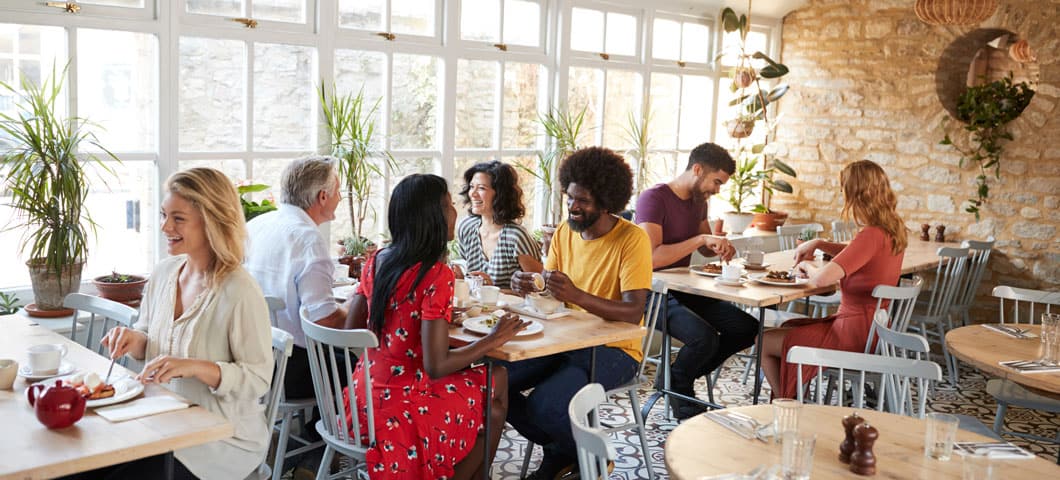
Locals Only:
Authentically Marketing Your Cuisine’s Culture

What defines local culture? Is it the attributes that distinguish a population’s preferences and interests? The way people speak, laugh and even eat? There’s more to local culture than what can be summed up on a menu; it’s a living picture of generations of tradition mixed with the modern identity of a specific population.
Still, local culture is one of the most neglected areas in marketing. It’s not that culture doesn’t get any attention, but it doesn’t get the level of carefully specified understanding that it needs to effectively target the people that carry it.
Some global restaurants have teams dedicated to making their eateries appeal to the community culture to have their cuisine favored by the locals—McDonald’s doesn’t serve beef in India. Others are instead driven by their cuisine’s culture—it is the essence of all the menu items, each location’s design and every piece of marketing. Regardless of whether you want to regionalize your restaurant’s cuisine or keep it standard it around the world, it’s important to understand that culture is more complex beneath the surface.
Capturing the Essence of Local Culture
The face of a culture doesn’t always have to be a waving flag. It’s important to understand the invisible parts of culture just as much as the features that are easily identifiable and also how it works in different environments.
There will always be obvious cultural indicators like music, colors or language. These should certainly be taken into consideration when designing a strategy to reach the members of that culture or community. But that doesn’t mean that your restaurant has to solely use the expected—a more authentic way to bring your cuisine’s culture into your brand is by picking up on the nuances locals will appreciate.
Like language, culture can be native but must also be practiced. It isn’t something that can simply be drawn on a menu or played over a speaker. You can only collect a full understanding of a particular culture by being immersed in it in your daily life.
Or there’s another approach—working with a partner well-versed in the culture of your customers and communities who can communicate that understanding in your marketing. This allows your restaurant to leverage the authenticity of their knowledge and expertise to gain credibility and build relationships.
Why Your Cuisine’s Culture Matters
Culture wasn’t crafted overnight; it was passed down through stories, gestures and habits that formed a way of life that is signaled through verbal and non-verbal cues. Your brand’s culture is a work of art, and it means the world to the people who live in it every day locally, regionally and nationally.
Culture is valuable in the restaurant industry because it can provide a reminiscent memory to some and an entirely new experience for others. Even if a non-local patron enters your location, they should be able to feel culturally immersed. A large part of culture is surrounded by the way people share food. Whether that culture is suggested through table style, meal delivery or recipes is determined on how deeply you want to personify your cuisine’s history.
Even if you have locations around the world, the degree of the presence of your culture can determine how successfully your restaurant will be at bringing your culture to every table.
Local, Everywhere
Your brand and its cuisine shouldn’t be mutually exclusive. The customer experience thrives when you can effectively mix the two to show that tradition can still be responsive. You can adapt to the modern world and simultaneously allude to history.
Although culture can be translated across regional lines, it can still change drastically, even by driving just a few minutes up the road. Central and south Florida are only hours apart, but worlds from each other in just about every other aspect. Working with this distinction in mind, our team translated and repackaged the Mango’s Tropical Cafe experience from a South Beach nightlife staple to a family-friendly affair on Orlando’s International Drive.
This type of hyper-localization can only be done with attentive marketing that focuses on capturing the cultural demands of a specific area. Combining the standard practices of a culture and adapting them to a specific location requires a lot of attention to detail, but these adaptations are what helps to introduce traditions around the world.
Partner with Your Locals
Some brands take on advertising in-house, but many restaurants choose to partner with an agency that can best understand the needs and wants of both the restaurant and its targeted patrons. This partnership may be determined through their experience working in the restaurant and tourism industries, and their expertise in the local culture itself.
Your agency should speak your language, both creatively and culturally. Working with an agency familiar with your cuisine and culture is essential to bridging the gap between your customers’ and your fare’s identity. Teaming up with a local agency means having a partner who can relate to your neighboring customers. You can also maximize your return with a partner that understands the travel and tourism industries as well. This means not only being able to connect with a local audience, but also tapping into the mindset of travelers looking to get a taste of the local dining experience.
The agency you collaborate with should be able to meet the needs and wants of both residents and tourists alike—you need a partner that lives local and can think global. This combination allows for your marketing to reach new demographics of customers, while also carrying the traditional inspiration of your cuisine.
Your menu shouldn’t have to do all the talking, so it’s important to partner with an agency that lets your restaurant tell a truly local story no matter where you want to take your cuisine’s culture.
